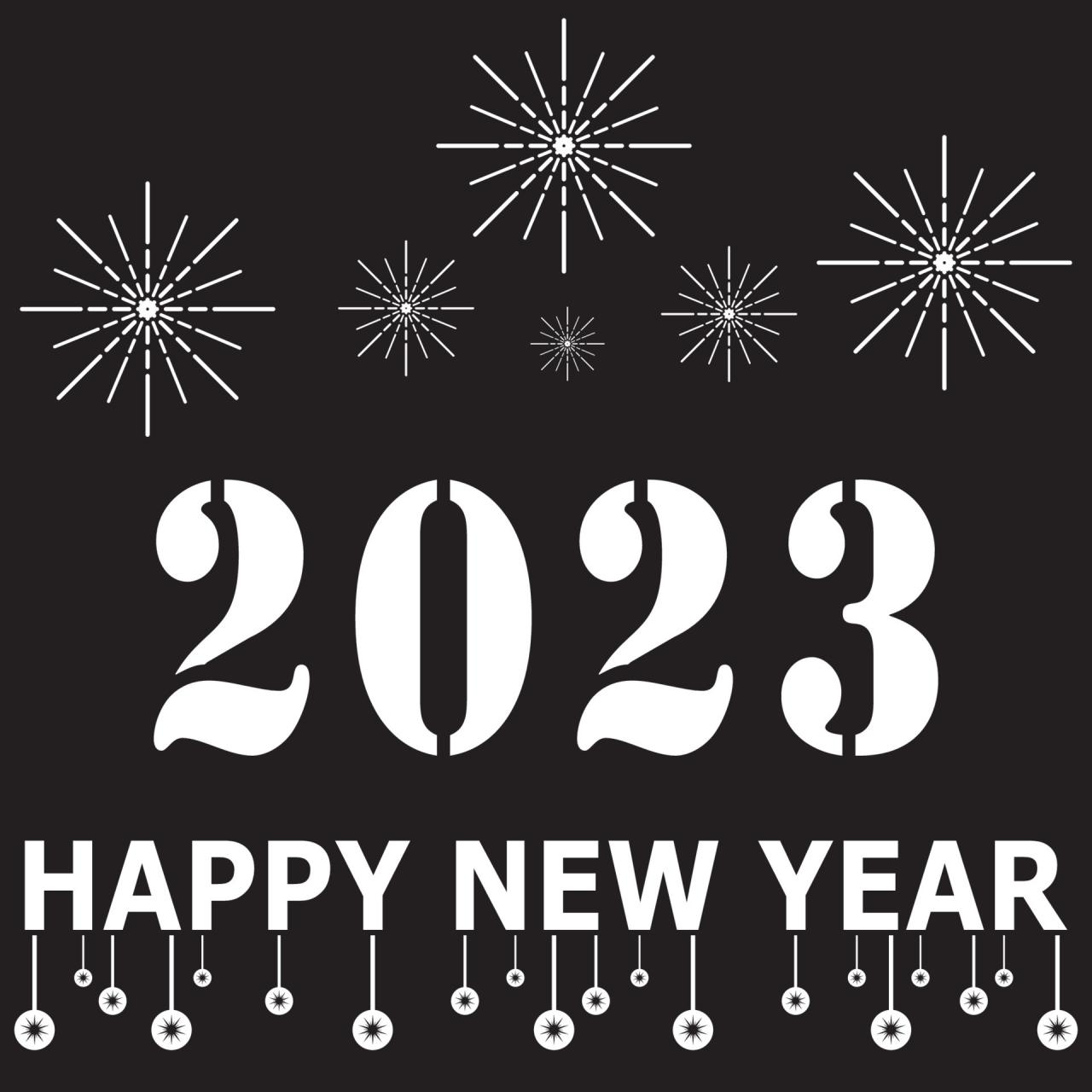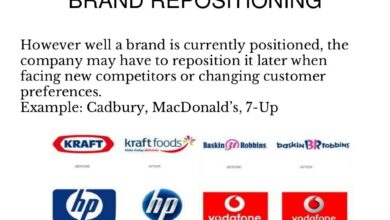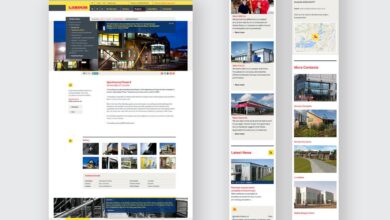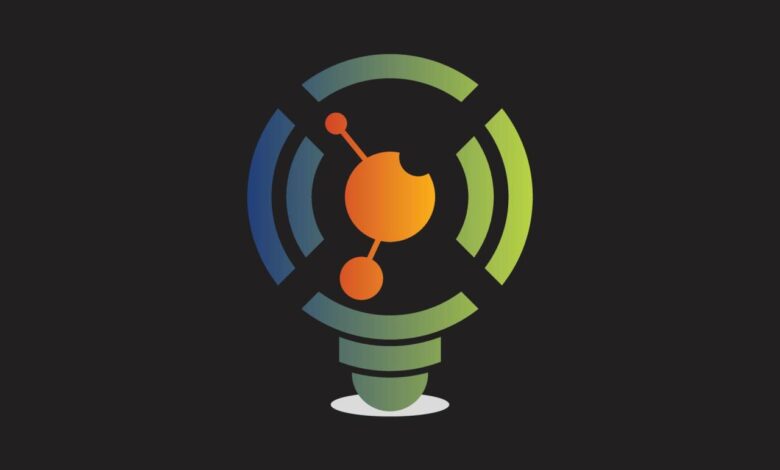
New Year New Logo A Brand Refresh Guide
New year new logo – New Year, New Logo! It’s more than just a catchy phrase; it’s a strategic move that can revitalize your brand and connect with your audience on a deeper level. This year, let’s dive into the psychology behind a logo refresh, explore the hottest design trends, and learn how to flawlessly implement a new look that truly resonates. We’ll uncover the secrets to a successful transition, drawing inspiration from real-world examples and offering practical advice to make your brand shine brighter than ever before.
From understanding the emotional impact of a logo change on customer loyalty to mastering the practical steps of a smooth rollout, we’ll cover everything you need to know. We’ll even peek into the future, examining emerging design trends and offering tips for creating a brand style guide that ensures consistency across all your platforms. Get ready to embark on a journey of brand reinvention!
The Psychology of Brand Refresh
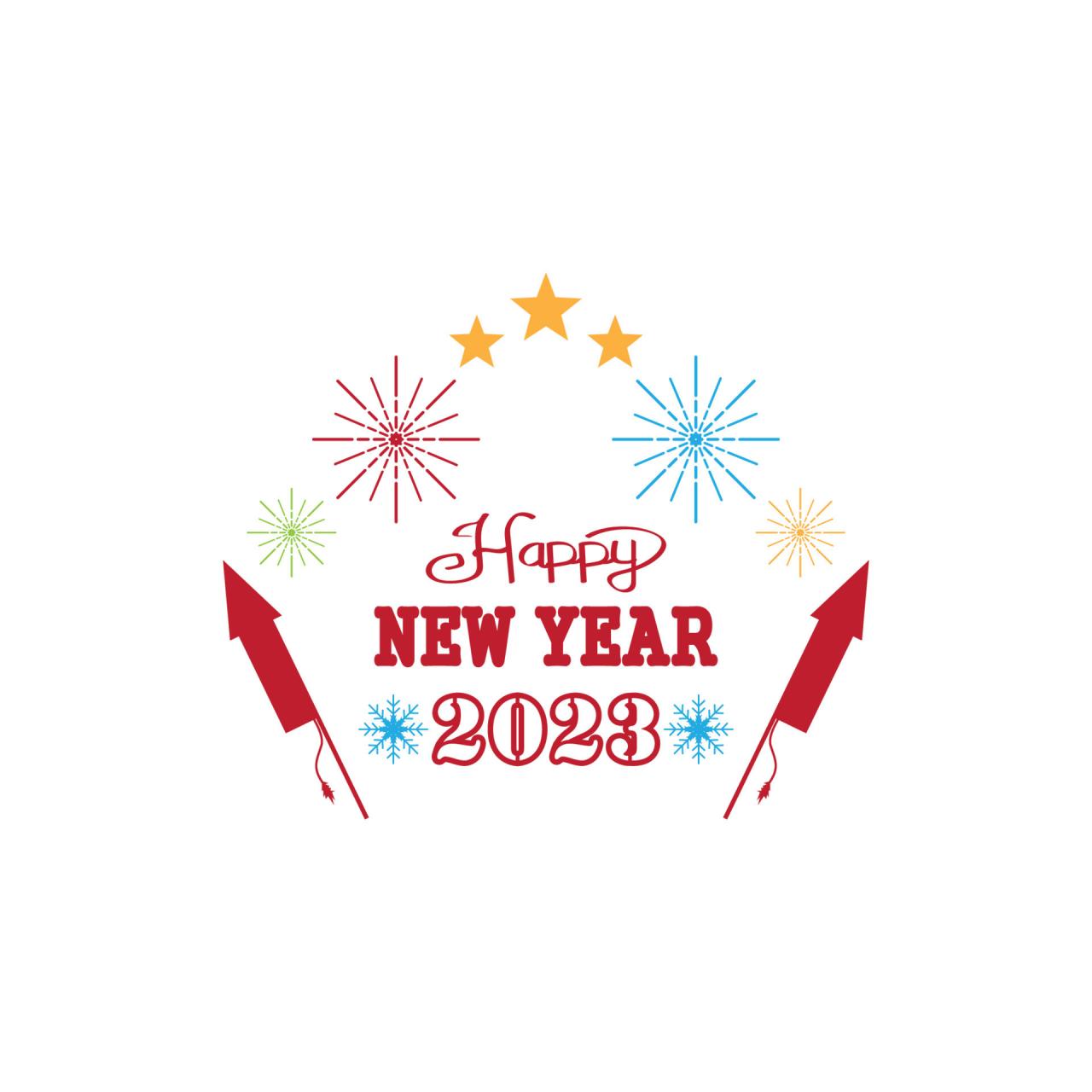
Source: vecteezy.com
A new logo isn’t just a cosmetic change; it’s a powerful psychological tool that can significantly impact consumer perception and brand loyalty. A well-executed refresh can revitalize a brand, attracting new customers while reassuring existing ones. Understanding the underlying psychology is crucial for maximizing the positive effects of a redesign.
Impact of a New Logo on Consumer Perception
A logo is the visual shorthand for a brand, instantly conveying its personality, values, and promise. A new logo, therefore, directly influences how consumers perceive the brand. A modern, streamlined design can signal progress and innovation, while a more traditional design might emphasize heritage and stability. Conversely, a poorly executed redesign can lead to confusion, alienating loyal customers and failing to attract new ones.
The impact hinges on the effectiveness of the design and how well it aligns with the brand’s overall strategy. Consider the case of Starbucks, whose logo evolution has reflected the brand’s growth and changing consumer preferences, maintaining brand recognition while signaling modernization.
Emotional Connection Between Logo and Brand Loyalty
Logos foster emotional connections with consumers. Over time, a familiar logo becomes associated with positive experiences, building trust and loyalty. A sudden, drastic change can disrupt this connection, potentially causing anxiety and uncertainty among loyal customers. However, a carefully planned refresh, which retains elements of familiarity while incorporating modern aesthetics, can maintain positive associations while signaling evolution and progress.
For example, a gradual shift in color palette or font, while maintaining core visual elements, can help mitigate negative reactions.
New Year Logo Refresh as a Signal of Growth and Innovation
Launching a new logo at the start of a new year is a powerful symbolic gesture. It signifies a fresh start, a commitment to growth, and a dedication to innovation. The new year itself represents a time of renewal and optimism, making it an ideal backdrop for introducing a refreshed brand identity. This strategic timing can amplify the message of progress and forward momentum, attracting both customers and investors.
This is often seen in technology companies, who use the start of the year to announce not only new logos but also new product lines or strategies.
Hypothetical Scenario: Successful Logo Redesign
Imagine a long-standing bakery, “Grandma’s Goodies,” known for its traditional recipes and comforting atmosphere. Their logo, a simple, slightly outdated illustration of a grandmother baking, while familiar, lacked the modern appeal to attract a younger demographic. A successful redesign might retain the grandmother figure, but update it with a more contemporary style, using brighter colors and a more streamlined font.
The new logo maintains the brand’s heritage while projecting a sense of freshness and vibrancy, attracting both existing and new customers. The positive feedback on social media, increased foot traffic, and a rise in sales would demonstrate the success of the refresh, proving the psychological impact of a well-executed brand revitalization. The bakery might also see an increase in younger customers, drawn to the modernized brand image.
Logo Design Trends for the New Year
The new year always brings a wave of fresh design trends, and 2024 is no exception. Logo design, a crucial element of brand identity, is constantly evolving, reflecting shifts in cultural aesthetics and technological advancements. This year, we’re seeing a fascinating blend of established styles reimagined and entirely new approaches emerging. Let’s delve into some of the key trends shaping the visual landscape of branding.
Emerging Logo Design Trends
Several key trends are poised to dominate logo design in the coming year. These trends represent a move towards both greater visual impact and increased brand accessibility. They are characterized by a focus on clarity, emotional connection, and a sophisticated understanding of the digital space.
- Fluid and Organic Shapes: Moving away from rigid geometric forms, we’re seeing a rise in logos incorporating flowing lines, soft curves, and natural textures. This trend reflects a desire for designs that feel more approachable and less corporate. Think of logos that evoke movement, growth, and fluidity, often utilizing gradients to enhance the sense of dynamism.
- 3D and Gradient Effects: While flat design remains popular, the addition of subtle 3D elements and sophisticated gradient applications is adding depth and visual interest to logos. This isn’t about overly realistic 3D rendering, but rather a nuanced use of shadowing and gradient transitions to create a sense of volume and texture, enhancing the overall visual appeal and making logos more captivating on screen.
- Bold and Unconventional Typography: Experimentation with typography is another prominent trend. We’re seeing a move beyond standard sans-serif fonts towards more distinctive and expressive typefaces, including custom lettering and hand-drawn styles. This adds a unique personality to the brand and can help it stand out in a crowded marketplace.
Minimalist vs. Complex Logo Design
Minimalist logos, characterized by their simplicity and clean lines, continue to be popular for their versatility and memorability. They prioritize clarity and readability, often using a single color or a limited color palette. However, we are also seeing a resurgence of more complex logo designs that incorporate intricate details and illustrative elements. These designs offer greater scope for storytelling and brand differentiation, but require careful execution to avoid appearing cluttered or overwhelming.
The choice between a minimalist and complex approach depends heavily on the brand’s personality and target audience. A tech startup might opt for a minimalist design, while an artisan bakery might choose a more intricate and illustrative approach.
Effective Use of Color Palettes in Logo Designs
Color plays a crucial role in shaping brand perception and conveying emotion. Effective color palettes in logo designs are carefully chosen to reflect the brand’s values and resonate with its target audience. Here are a few examples:
| Trend | Description | Example Color Palette | Brand Example |
|---|---|---|---|
| Earthy Tones | Evokes feelings of naturalness, sustainability, and trustworthiness. | Warm browns, muted greens, creams | A sustainable coffee company |
| Vibrant Monochromatic | Uses varying shades of a single color for a cohesive and impactful look. | Deep blues, lighter blues, teal | A tech company focused on innovation |
| Bold Complementary Colors | Uses colors opposite each other on the color wheel for high contrast and visual excitement. | Orange and teal, red and green | A creative agency |
| Pastel Hues | Creates a soft, gentle, and approachable brand image. | Light pinks, lavenders, mint greens | A children’s clothing brand |
Impact of Typography Choices on Logo Readability and Brand Personality, New year new logo
Typography is more than just the font; it’s a powerful tool for communicating brand personality and ensuring logo readability. A legible logo is crucial for recognition and recall. Serif fonts often convey a sense of tradition and sophistication, while sans-serif fonts generally project modernity and minimalism. Script fonts can add elegance and personality, but must be used judiciously to maintain readability.
The weight, spacing, and overall style of the typeface all contribute to the logo’s overall impact and brand message. For example, a bold, heavy typeface might suggest strength and authority, while a delicate, thin typeface might convey elegance and refinement. Careful consideration of these factors ensures that the typography reinforces, rather than detracts from, the overall brand identity.
Practical Aspects of Logo Implementation
Launching a new logo is more than just unveiling a pretty picture; it’s a strategic undertaking that requires careful planning and execution to ensure a smooth transition and maximize its impact. A well-managed rollout protects your brand equity and reinforces your brand identity across all touchpoints. This section Artikels the practical steps involved in successfully implementing your new logo.A successful logo transition hinges on a well-defined plan and consistent execution across all platforms.
Failing to consider the practicalities can lead to confusion among your audience and dilute your brand message. A systematic approach minimizes disruption and maximizes the positive impact of your rebranding effort.
Step-by-Step Logo Transition Guide
Implementing a new logo requires a phased approach. A rushed rollout can lead to inconsistencies and negative perceptions. Here’s a suggested workflow:
- Internal Communication: Before any public announcement, thoroughly brief your internal teams. Provide clear guidelines, answer questions, and address any concerns. This ensures everyone is on board and prepared for the change.
- Digital Asset Update: Begin updating your digital assets – website, social media profiles, email signatures, online advertising – with the new logo. This is often the most visible change, so a smooth transition here is crucial.
- Print Material Inventory and Replenishment: Assess your existing print materials (business cards, brochures, stationery). Decide whether to phase out existing materials or create a transition period using both old and new logos. Plan for the printing and distribution of updated materials.
- Public Announcement: Announce the new logo to your customers and stakeholders. Consider a press release, social media campaign, or email announcement, depending on your target audience and communication strategy.
- Monitoring and Feedback: After the launch, monitor customer feedback and address any issues promptly. This helps identify and rectify any problems early on.
Consistent Branding Across Platforms
Maintaining a consistent brand image is vital for recognition and trust. Your logo is a key element of this consistency. Inconsistencies, even small ones, can undermine the impact of your rebranding efforts. Imagine a company launching a modern, minimalist logo, only to have its social media profiles still using a dated, cluttered design. The dissonance would confuse customers and damage the brand’s perceived professionalism.
New Logo Rollout Checklist
A comprehensive checklist ensures no crucial step is overlooked. This checklist should be tailored to your specific needs, but here are some key areas to consider:
- Internal communication plan
- Digital asset inventory and update schedule
- Print material inventory and disposal plan
- Public announcement strategy and timeline
- Brand guidelines document creation and distribution
- Training materials for employees
- Feedback mechanisms and response plan
- Budget allocation for rebranding activities
- Post-launch monitoring and reporting
Creating a Brand Style Guide
A brand style guide is your bible for consistent brand application. It provides clear guidelines on logo usage, color palettes, typography, and overall brand voice. For a new logo, this is crucial. The style guide should include high-resolution versions of the logo in various formats (vector, raster), clear specifications on minimum size and clear space, acceptable color variations, and examples of proper logo usage.
It should also address the application of the logo on different platforms and mediums. For example, it would specify how the logo should appear on a website banner versus a business card. A well-defined style guide ensures consistency across all brand touchpoints, preventing visual inconsistencies and protecting your brand’s integrity. Consider including examples of both correct and incorrect logo usage to illustrate best practices.
Case Studies of Successful New Year Logo Redesigns
A logo redesign is a significant undertaking, impacting brand perception and market positioning. A successful refresh not only updates the visual identity but also reinforces brand values and resonates with the target audience. Let’s examine some real-world examples of companies that expertly navigated this process, achieving positive results and strengthened brand recognition.
Airbnb’s 2022 Logo Redesign
Airbnb’s 2022 logo refresh subtly modernized their brand identity while retaining core elements. The previous logo, featuring a simple, stylized letter “A,” was replaced with a more sophisticated, yet equally recognizable, version. This update demonstrated a shift towards a more mature and globally-oriented brand. The change was well-received because it maintained familiarity while signaling growth and evolution.
The success stemmed from a thoughtful approach to maintaining brand consistency. The new logo still clearly communicates the brand, but with a more refined and sophisticated look. The updated design felt more modern and adaptable across various platforms and applications.
- Before: A simple, slightly cartoonish “A” within a rounded square. Projected a more playful, less established brand.
- After: A more refined, slightly more abstract “A” with a bolder, more modern typeface. Communicated a sense of sophistication and global reach.
- Impact: Positive consumer reception due to its subtle yet effective modernization, retaining brand recognition while projecting a more mature image.
Mastercard’s 2016 Logo Redesign
Mastercard’s 2016 redesign was a simplification of their existing logo. They removed the wordmark and focused solely on the iconic overlapping circles, streamlining the visual identity for improved versatility across various platforms. This bold move demonstrated a confident brand ready to adapt to the digital age. The clean, minimalist design proved highly effective, improving recognition and recall.
The success of this redesign was largely due to the powerful impact of the simplified design. The overlapping circles were already iconic; removing the wordmark increased their visual impact and allowed for greater flexibility in usage. The minimalist approach reflected the contemporary design trends and a sense of modern efficiency.
- Before: Overlapping circles with the wordmark “MasterCard” underneath.
- After: Only the overlapping circles, a significantly simplified and more versatile design.
- Impact: Enhanced brand recognition and memorability, improved adaptability across different media and contexts, and a modernized image.
Pepsi’s 2008 Logo Redesign
Pepsi’s 2008 logo refresh was a significant departure from its previous iterations, featuring a more modern and streamlined design. The globe-shaped logo was replaced with a sleeker, more dynamic emblem, accompanied by a more contemporary typeface. The new logo reflected the brand’s attempt to modernize its image and appeal to a younger demographic. The redesign was initially met with mixed reactions, but over time, it gained acceptance.
While initially controversial, the redesign ultimately proved successful due to its alignment with evolving consumer preferences and the brand’s strategic repositioning. The new logo effectively conveyed a sense of modernity and energy, resonating with a younger, more digitally-savvy audience. The company’s marketing efforts played a crucial role in gaining public acceptance.
So, New Year, new logo! I’m really excited about the fresh look and feel for my brand. To help spread the word, I’m focusing on boosting my YouTube presence, which means I’ve been diving deep into this amazing guide on getting it on with YouTube – seriously, check it out! It’s helped me strategize how to best showcase the new logo and build anticipation for what’s to come this year.
My new logo is going to look amazing on YouTube!
- Before: A globe-like design with a gradient effect and a more traditional typeface.
- After: A sleeker, more modern design with a dynamic curve and a more contemporary typeface.
- Impact: A modernized brand image, better appeal to younger demographics, although initially met with mixed reactions, ultimately became widely accepted.
Visual Representation of “New Year, New Logo” Concept
The visual representation of “New Year, New Logo” should evoke a sense of dynamism, progress, and a clean break from the past, symbolizing the fresh start a new logo represents for a brand. The design should be both modern and memorable, capturing the excitement and anticipation associated with the new year.The core concept revolves around a metamorphosis, a transition from an older, perhaps slightly faded form to a vibrant, renewed one.
This transition visually represents the brand’s evolution and its commitment to progress.
Color Palette and Symbolic Meaning
The color palette is crucial in conveying the intended message. We begin with a muted, slightly desaturated palette representing the past year – think deep teal or a dusty rose, colors that hint at the accomplishments of the previous year but also subtly suggest a need for change. These colors slowly transition into a brighter, more saturated spectrum as the design progresses.
The transition could be a gradient, subtly shifting from the muted tones to a vibrant, energetic palette – perhaps a sunny yellow, a bright coral, or a fresh, spring green, all representing growth, optimism, and the energy of a new beginning. The choice of specific colors will depend on the brand’s existing identity and target audience, but the contrast between the muted and vibrant palettes is key.
Shapes and Their Representation of Transformation
The shapes used will reinforce the theme of transformation. The design could start with a slightly angular, perhaps somewhat rigid shape representing the old logo. This shape then gradually morphs and softens into a more fluid, dynamic form – perhaps incorporating curves and softer edges – to represent the new logo. This metamorphosis could be achieved through a subtle animation or a series of carefully positioned shapes that gradually transition into one another.
The final shape should be modern, clean, and reflective of the new brand identity.
Texture and the Sense of Renewal
Texture plays a subtle but important role. The older shape could have a slightly rough or textured appearance, perhaps suggesting a feeling of age or slightly dated design. As the shape transforms, the texture becomes smoother, cleaner, and more refined, symbolizing the process of renewal and the polished look of the new logo. This textural contrast further emphasizes the transition from old to new.
Overall Mood and Message
The overall mood should be one of optimistic anticipation and confident progress. The visual journey from the muted, slightly aged representation of the old logo to the vibrant, sleek representation of the new logo should be seamless and engaging, conveying a sense of positive change and excitement for the future. The message is clear: the brand is evolving, embracing innovation, and is ready for a successful new year.
The design should be elegant, memorable, and communicate the brand’s renewed commitment to its customers and its vision for the future.
Closing Notes: New Year New Logo

Source: vecteezy.com
Refreshing your logo for the new year is a powerful way to signal growth, innovation, and a commitment to your evolving brand identity. By understanding the psychology behind brand perception, staying ahead of design trends, and executing a smooth implementation plan, you can ensure a positive impact on your customers and overall business success. Remember, a well-executed logo redesign is more than just a visual change; it’s a strategic investment in your brand’s future.
So, embrace the new year, embrace the new logo, and watch your brand soar to new heights!
Popular Questions
How long does a logo redesign typically take?
The timeline varies greatly depending on the complexity of the project and the agency or designer you work with. Expect anywhere from a few weeks to several months.
How much does a logo redesign cost?
Costs range widely, from a few hundred dollars for basic redesigns to tens of thousands for comprehensive brand overhauls. Factors influencing cost include the scope of work, designer experience, and revisions.
What if my customers don’t like the new logo?
Thorough market research and testing before launch are crucial. A well-executed rollout with clear communication about the reasons for the change can help mitigate negative reactions.
Should I change my logo every year?
No. Logo redesigns should be strategic, not annual. Consider a refresh when your brand has evolved significantly or your current logo no longer aligns with your target audience.
